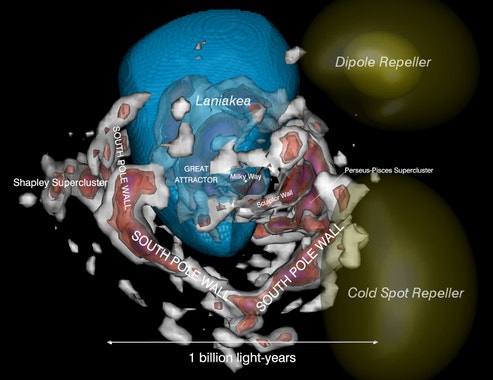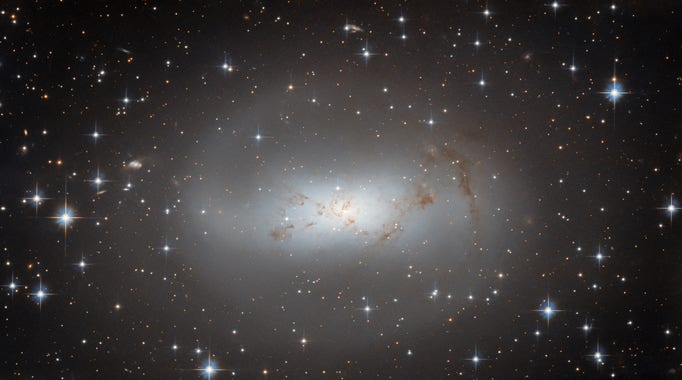Have We Found Fragments of a Meteor from Another Star? (www.scientificamerican.com)
Tiny spheres of once-molten metal magnetically dredged from the seafloor could be pieces from IM1, a potential interstellar meteor that struck Earth in 2014

Tiny spheres of once-molten metal magnetically dredged from the seafloor could be pieces from IM1, a potential interstellar meteor that struck Earth in 2014


Astronomers recently announced that they had discovered 62 new moons around the ringed planet Saturn and more are being added to the list. So, how have they lain hidden for so long?

The cold and mysterious Oort cloud at the edge of our solar system may be hiding a rogue planet

It's also seeking more partnerships and acquisitions..

The first Artemis astronauts have begun crew training for their Artemis II mission around the Moon, and teams at NASA’s Marshall Space Flight Center in Huntsville, Alabama, are testing and configuring the flight software for the mega Moon rocket that will launch them on their journey.
Stars are thought to form within enormous filaments of molecular gas. Regions where one or more of these filaments meet, known as hubs, are where massive stars form....

Radioactive isotopes in meteorites suggest that a supernova erupted in the vicinity of the solar system as it was forming.


A new high-speed weather camera above Europe and Africa records the daily frenzy of lightning storms. Space-adjacent, so I thought it might fit here

SpaceX is filling in for ESA as European rockets face delays.

NASA’s Parker Solar Probe Identifies Mechanism Driving the Sun’s Fast Wind Parker Solar Probe data has helped researchers understand how the sun's wind can reach speeds exceeding 1 million miles per hour. This could assist in predicting large solar eruptions, enhance our understanding of cosmic winds.

Upgrades to Kennedy Ground Systems near completion for Artemis II.
NASA Administrator Bill Nelson will visit Jeff Bezos' Blue Origin space venture to get a firsthand look at the Seattle area's space industry.

Observers described it as an almost demolition derby-like collision of stellar remnants and stars in the chaotic neighborhood of the galaxy's central supermassive black hole. The source of the GRB flash lay just 100 light-years away from the heart of the galaxy. It turned out to be in very close proximity to the central...

Watch the European satellite, called Euclid, soar to space aboard a SpaceX Falcon 9 rocket from Cape Canaveral Space Force Station on Florida's Space Coast. The launch took place today, July 1, at 11:11 a.m EDT.

The Euclid telescope, just launched today, will be able to observe galaxies out to 10 billion light-years. Here's the largest map I could find (1 billion light years) that includes the Milky Way, Laniakea, the Shapley supercluster, the Perseus–Pisces supercluster, and the South Pole Wall....



Artist's concept illustrating Kepler-16b, the first directly detected circumbinary planet, which is a planet that orbits two stars.

Shining a light on the dark side of the universe - that’s the task of a new mission by the European Space Agency that's set to launch on Saturday. Euclid aims to find out more about two of the universe's greatest mysteries: dark energy and dark matter.

"A space tug that launched on a SpaceX rideshare mission on June 12 started spinning uncontrollably after being deployed."...


"Now, for the first time, the IceCube Neutrino Observatory has produced an image of the Milky Way using neutrinos—tiny, ghostlike astronomical messengers. In an article to be published in the journal Science, the IceCube Collaboration, an international group of over 350 scientists, presents evidence of high-energy neutrino...

In one experiment, the Viking landers added water to Martian soil samples. That might have been a very bad idea.
